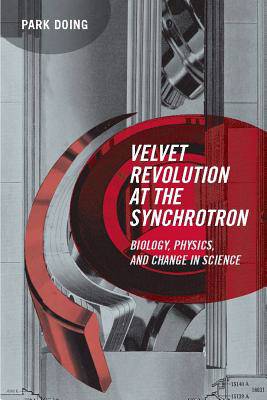
- Afhalen na 1 uur in een winkel met voorraad
- Gratis thuislevering in België vanaf € 30
- Ruim aanbod met 7 miljoen producten
- Afhalen na 1 uur in een winkel met voorraad
- Gratis thuislevering in België vanaf € 30
- Ruim aanbod met 7 miljoen producten
Omschrijving
Change in scientific practice and its implications for the status of scientific claims, examined through an analysis of three episodes at a synchrotron laboratory.
After World War II, particle physics became a dominant research discipline in American academia. At many universities, alumni of the Manhattan Project and of Los Alamos were granted resources to start (or strengthen) programs of high-energy physics built around the promise of a new and more powerful particle accelerator, the synchrotron. The synchrotron was also a source of very intense X-rays, useful for research in solid states physics and in biology. As synchrotron X-ray science grew, the experimental practice of protein crystallography (used to determine the atomic structures of proteins and viruses), garnered funding, prestige, and acclaim. In Velvet Revolution at the Synchrotron, Park Doing examines the change in scientific practice at a synchrotron laboratory as biology rose to dominance over physics. He draws on his own observations and experiences at the Cornell University synchrotron, and considers the implications of that change for the status of scientific claims. Velvet Revolution at the Synchrotron is one of the few recent works in the sociology of science that engages specific scientific and technical claims through participant observation--recorded evocatively and engagingly--to address issues in the philosophy of science. Doing argues that bureaucratic change in science is neither "top-down" nor "bottom-up" but rather performed in and realized through recursively related forums of technical assertion and resistance. He considers the relationship of this change to the content of science, and the implications of this relationship for the project of laboratory studies begun in the late 1970s.
Specificaties
Betrokkenen
- Auteur(s):
- Uitgeverij:
Inhoud
- Aantal bladzijden:
- 152
- Taal:
- Engels
- Reeks:
Eigenschappen
- Productcode (EAN):
- 9780262042550
- Verschijningsdatum:
- 1/08/2009
- Uitvoering:
- Hardcover
- Formaat:
- Ongenaaid / garenloos gebonden
- Afmetingen:
- 140 mm x 203 mm
- Gewicht:
- 317 g

Alleen bij Standaard Boekhandel
Beoordelingen
We publiceren alleen reviews die voldoen aan de voorwaarden voor reviews. Bekijk onze voorwaarden voor reviews.











